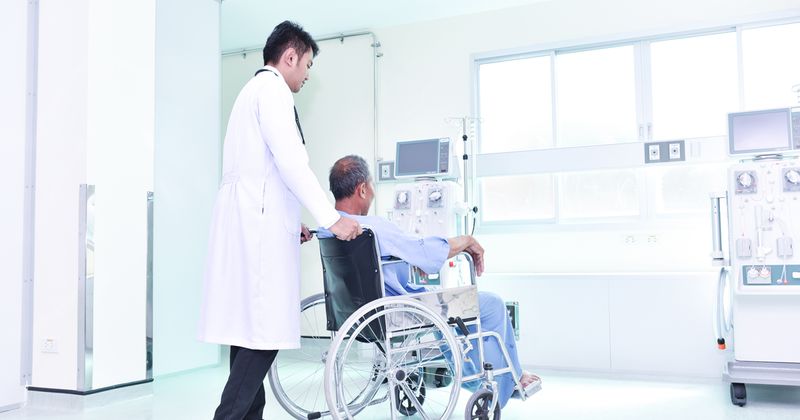COVID-19 pandemic heightens need for diligence about infection control
Click Here to Manage Email Alerts
The COVID-19 pandemic has increased the chance of infection in patients on in-center dialysis, mandating that nephrology nurses be more diligent about following protocols to reduce the risk, a speaker said.
“COVID-19 has thrust infection prevention and control into the spotlight,” Tara Millson, DNP, RN, CIC, FAPIC, an infection prevention consultant with the CDC’s division of health care quality promotion surveillance branch, said at the American Nephrology Nurses Association National Symposium, which was held as a virtual meeting. “We know that it is very easy to spread infection inside and outside of health care, but it is also fairly simple to prevent the spread through straightforward methods being applied consistently.”

Millson pointed out the risk that nephrology nurses already face each day from the use of central venous catheters, bloodborne infections and the dialysis process itself.
“What it comes down to in the dialysis setting is ensuring that standards are adhered to,” Millson said, “and that evidenced-based practices are in place and are reliably followed.”

Infections are the leading cause of hospitalizations and second leading cause of death in patients on hemodialysis, according to the CDC. Approximately 40% of the Medicare cost for dialysis care is spent treating infections, Millson said. Among all specialties, “infection is the leading cause of hospitalization and the second leading cause of death behind only cardiovascular disease,” Millson said. “Bloodstream infections are the most serious infection in terms of morbidity and mortality and, although these are very serious and prevalent, there are many other infections which affect the dialysis population.”
That can include waterborne infections; respiratory infections, such as influenza or COVID-19; pneumonias and bloodborne pathogens, such as hepatitis B (HBV) and C (HCV), she said.
Hepatitis can remain viable for days on environmental surfaces at room temperature.
“HBV and HCV have been detected on clamps, scissors and dialysis machine control panels,” Millson said. “HBV at low titers can be present on environmental surfaces in the absence of any visible blood and still result in transmission.”
The risk of infection is the highest for patients on dialysis who use central venous catheters; the lowest risk is for arteriovenous fistulas.
“The most basic strategy to prevent bacteremia, including invasive MRSA infections, is minimizing catheters that are used for long-term vascular access,” Millson said. The CDC reported 37,000 bloodstream infections in patients on dialysis in 2008.
Cleaning of dialysis stations should be done after every patient use but should not occur until the station is empty and the patient has left the chair, Millson said. “So, when you're doing your schedule, you want to make sure that there is enough patient-free time so that appropriate cleaning can take place.”
Likewise, it is important that nurses are diligent about how they use needles and syringes. “These are single-use devices. Whenever I bring this up, health care workers nod their head in agreement, but then somewhere in the United States we see some sort of outbreak related to somebody using a syringe or a needle or a single-use vial for more than one patient,” Millson said.
“Last year at a flu clinic in Pennsylvania, there was a nurse who was administering flu shots to nursing home residents. She changed the needle between patients but didn't change the syringe. And every time you give an injection, there is a little bit of negative pressure. So that causes a little bit of a backflow of blood into that syringe. One of the patients had hepatitis C and she gave the injection and then changed the needle, went to the next patient, and gave them their injection,” Millson said. “There were about nine people who were exposed to hepatitis C because of this.”
To reduce the risk of infection, nurses should follow protocols outlined by the CDC and required by CMS for clinic operations. These include use of standard precautions such as hand hygiene for all clinic personnel, use of personal protective equipment, safe injection practices, proper handling of contaminated material, and regular environmental and equipment cleaning and disinfection.
“The basis of CDC recommendations include standard precautions, and this is based on the idea that every patient has the potential to be infected with a virus, a bacterium that can be transmitted from patient to patient or from a patient to health care worker,” Millson said. “So you have to treat everybody as though they have a potentially infectious disease.”

